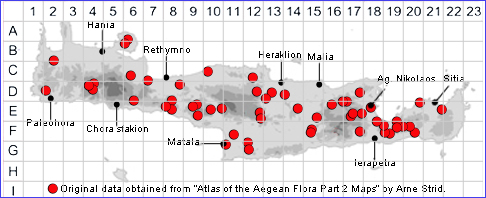SPECIES DESCRIPTION
IRIS TUBEROSA
Family and Genus:- See- IRIDACEAE
Common Names:- Snakes head iris, Widow iris.
Homotypic Synonyms:- Hermodactylus tuberosus
Meaning:- Iris (L) After Iris, the mythological messenger of the gods of the
rainbow.
Tuberosa (L) Swollen, tuberous.
General description:- Tuberous perennial.
Stock:-
1) With 2-4 tubers.
Stems:-
1) 20-40cm, slender, erect.
Leaves:-
1) 1·5-3(-5) mm wide, exceeding the stems, quadrangular in section.
Flowers:-
1) Yellowish-green except for the dark brownish-violet limb of the falls.
2) Pedicel, 10-50 mm.
3) Spathes, 1-2, equalling or exceeding the flower, herbaceous, infundibuliform.
4) Hypanthial tube, c. 5 mm.
5) Falls, 40-50 mm; limb shorter than the claw, ovate-orbicular to obovate-oblong,
patent.
6) Standards, 20-25 mm, linear to oblanceolate, mucronate.
7) Ovary, unilocular, with a very slender sterile upper portion 6-8 mm.
Key features:-
1) Style-branches, petaloid.
2) Stock, with long, digitate root-tubers.
3) Ovary, unilocular.
Habitat:- Seasonally damp grassy meadows, road embankments, field margins,
open woodland, archaeological sites. 0-1200 m.
Distribution:- Most of Greece, but rare in the E Aegean area and lacking in the far
north. - C & E Mediterranean region. Widespread and common on Crete.
Flowering time:- Feb to early May.
Photos by:- Steve Lenton

